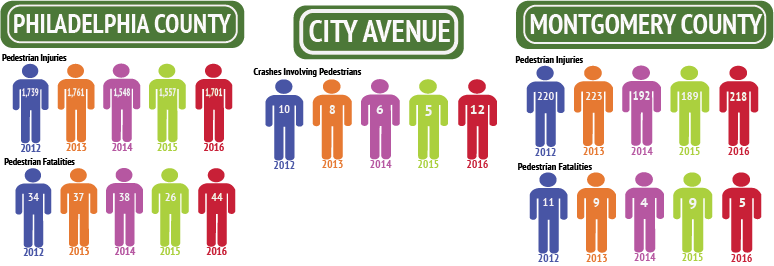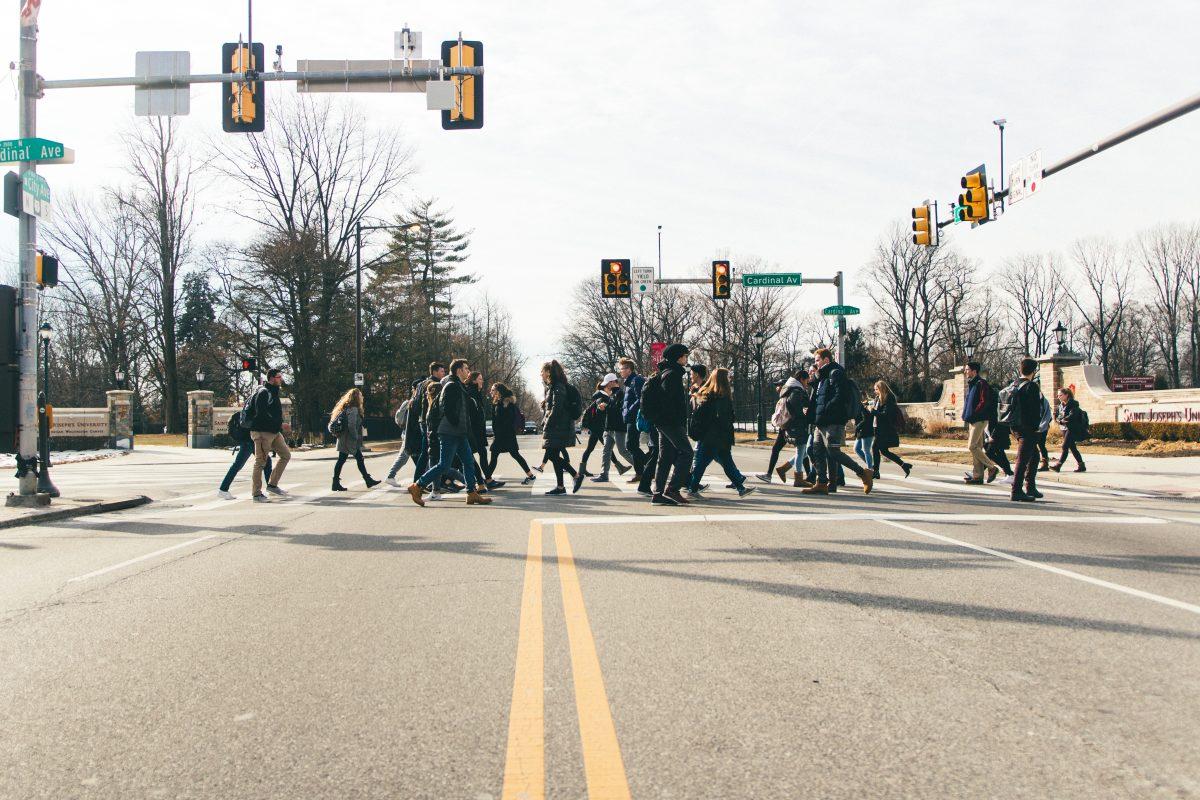University to look at preventive measures for pedestrian accidents
Two pedestrian accidents on City Avenue in December prompted St. Joe’s Department of Public Safety to email a statement to all students, faculty and staff asking students to be mindful when crossing a street even if it is supposedly safe to walk.
“Even though a safe crossing signal has been given, establishing what we hope is a safe walkway, people when crossing should still be very aware of their surroundings and attentive to detail,” said Arthur Grover, director of Public Safety and Security.
According to Grover, university officials met before the start of the spring semester in order to determine what needs to be done in terms of awareness, and also how to work with the Pennsylvania Department of Transportation (PennDOT) to look at the intersections in which the St. Joe’s community crosses to assure that they are doing what is needed to keep those pedestrians safe.
“There is a plan that is in progress around City Avenue over the next couple of years you are going to see a change in the way the street is designed,” Grover said.
Cary Anderson, Ed.D., vice president of student life, associate provost, said that the new safety features on City Avenue are part of a multi-year university effort to improve the safety of City Avenue.
“This has been going on since the acquisition of the Maguire Campus,” Anderson said. “Dr. Reed and others at the University are very concerned about [pedestrian safety on City Avenue] and are helping move things along in a way that will be beneficial to the University.”
In an emailed response to a question about speed on City Avenue, PennDOT Safety press officer Ayanna N. Williams said new signage and street signs were installed as part of the project.
“City Avenue is a U.S. highway and experiences high daily traffic volumes which would not be conducive to speed traps, or lowering the speed limit,” Williams said.
While lowering the speed limit is not an option, Anderson said that the university is looking into placing electronic speed signs on City Avenue, which have been proven to decrease drivers’ speed.
Electronic speed signs do slow drivers’ speed, a Morgan State University study found, but only for a certain period of time. The study also found that placing the signs strategically is important because drivers tend to speed up after seeing the signs. Even if drivers obey the speed limit, pedestrians are still at risk.
Ali Natale ’18, Student Senate President, thinks an increase in public safety officers on campus will help with keeping students safe.
“Having a figure there that is an authoritative figure [will] keep people alert and paying attention,” Natale said. “Especially if they are at major crosswalks and stuff of that nature the public safety officers can be there advising students so that if they aren’t paying attention they can say stop or go when the light turns.”

Rose Walton ’19 was struck by a vehicle turning left from City Avenue onto Cardinal Avenue in 2017. She was paying attention at the time.
“I was in the middle of the crosswalk and had the right of way when I was hit,” Walton said. “I mean, at the end of the day, you can follow all the rules, but drivers that are driving without paying attention are going to hit you no [matter] whether they are within the bounds of law or not.”
Terrence Foley, president and CEO of the City Ave District and John Collins, director of Operations and Public Safety of the City Ave District, said the City Avenue Project was created to enhance safety on City Ave.
Phase one of the project, completed in summer 2017, included additional traffic signals and new audio alerts on crossing signs. In phase two of the project, the City Avenue Project team will work on textured warning stripes that allow drivers to be aware that a crosswalk is coming up and to slow down.
“There will also be medians installed in certain sections of City Avenue including the university area,” Foley said. “We are also working on getting [additional] funding for lighting on the areas between 52nd and Lapsley so it is better lit at night and people can more easily see pedestrians in particular.”
The project also intends to try and add stamped crosswalks that make the crosswalks more identifiable to drivers so they can stop in time.
Collins said a common factor in these pedestrian accidents is speed, which is why he encourages drivers to slow down and be more observant of what is happening. However, he also urges pedestrians to do the same thing.
“There are multiple reasons why a pedestrian might get struck, a lot of the time the pedestrian is at fault,” Collins said. “I am not saying that in these two cases [in December] but the large majority of pedestrian crashes are due to the fault of pedestrians stepping out in front of a car when the car has no time to stop whatsoever. That is educating the pedestrians and I think we are doing a good job with that.”
Students are not the only ones at risk each time they have to cross City Avenue and some of the adjoining streets. Anthony Rogers, 58, a resident of the 5800 block of Woodcrest Avenue was struck and killed on the corner of 54th Street and City Avenue while crossing the street on Dec. 26 around 10:30 P.M.
Grover said he understands that traffic must flow on City Avenue, and will urge PennDOT to consider the safety of the pedestrians.
“Those types of things are on my mind because I’m responsible for the safety of this campus,” Grover said. “We have had not one incident but two, so you want to communicate out, you want to learn what you can do with the authorities to enlist their aid, make sure that they are serving us well because safety is number one and they’ll agree with that.”














































